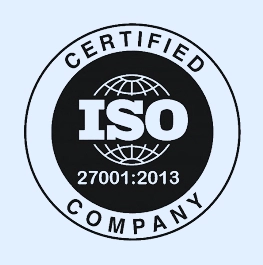A business’s success isn’t measured solely by how many people see your product or service but by how many ultimately purchase it. This is where the conversion rate (CR) comes into play—a critical metric that reflects the effectiveness of your marketing and business strategies. Want to know what conversion rate is, how to calculate it, and how to improve it? This article has all the answers.
What is a Conversion Rate (CR)?
The conversion rate (CR) is a key metric in digital marketing. It represents the percentage of visitors to your website or digital platform who take a desired action. This action could be making a purchase, signing up for a newsletter, downloading a document, or achieving any other goal you’ve defined as important to your business.
The importance of conversion rate lies in its ability to provide insights into the effectiveness of your marketing strategy. It not only shows how many people are exposed to your message but also how many respond as intended. This metric is essential for evaluating the return on investment (ROI) of your marketing campaigns.
A high conversion rate indicates that your content, design, and strategy resonate effectively with your target audience. Conversely, a low conversion rate suggests room for improvement in one or more areas. By focusing on conversion rates, you can make informed decisions about where to invest resources to improve performance.
How to Calculate Conversion Rate
Calculating the conversion rate is straightforward:
Conversion Rate (%)=(Number of ConversionsNumber of Visitors or Total Impressions)×100\text{Conversion Rate (\%)} = \left( \frac{\text{Number of Conversions}}{\text{Number of Visitors or Total Impressions}} \right) \times 100
For example, if 100 people visit your site and 5 make a purchase, your conversion rate is 5%.
Remember, the definition of “conversion” depends on your business goals. It could be a purchase, a newsletter signup, or any other action you’ve prioritized. Tools like Google Analytics can help you accurately track user behavior, measure conversions, and segment data by traffic sources, devices, and other variables.
What is Considered a Good Conversion Rate?
A “good” conversion rate varies depending on factors such as your industry, the type of product or service you offer, and even the time of year. However, some general benchmarks can help you evaluate your performance:
- On average, a conversion rate of 2% to 5% is considered standard for most online businesses.
- Leading companies in their fields may achieve conversion rates of over 10%.
Even a small improvement in your conversion rate can result in significant revenue growth. To better assess your performance, compare your conversion rate to industry averages. For example, websites offering email services may see higher conversion rates than luxury e-commerce stores due to differences in the customer decision-making process.
Monitor trends over time and aim for continuous improvement, even if you’re already meeting industry standards.
What is Conversion Rate Optimization (CRO)?
Conversion Rate Optimization (CRO) is the systematic process of improving elements on your website or marketing campaign to increase the percentage of visitors who take a desired action. CRO combines data analysis, consumer psychology, and user interface (UI) design to create an optimal experience that drives more conversions.
CRO techniques include:
- A/B testing for call-to-action (CTA) buttons
- Enhancing website loading speed
- Redesigning site architecture
- Adding advanced features like improved search engines or product comparison tools
CRO is not a one-time activity; it’s an ongoing process. Consumer behavior and market trends evolve constantly, requiring continuous monitoring, data analysis, and adjustments based on new insights. This data-driven approach ensures consistent improvements in business performance.
Why is Conversion Rate Optimization Important?
CRO is vital for business success for several reasons:
- Maximizing ROI: CRO helps extract more value from your existing traffic, reducing the need to increase your marketing budget to attract new visitors.
- Enhancing User Experience: Improving conversion rates often involves refining the user experience, which can boost customer satisfaction, loyalty, and brand reputation.
- Valuable Insights: CRO provides critical information about what drives or deters customer actions, informing both current campaigns and future strategies.
6 Tips for Improving Conversion Rates
Here are six actionable tips to help you boost your conversion rates and achieve better results:
- Experiment and Test:
Conduct systematic A/B tests on various elements, such as headlines, colors, and CTA button placement. Test one change at a time and use analytics tools to make data-driven decisions. - High-Quality Content:
Offer clear, accurate, and relevant content tailored to your target audience. Use language that addresses customer needs directly and incorporate diverse content types, like videos or interactive tools, to keep users engaged. - Focus on Lead Quality:
Prioritize attracting high-quality leads over quantity. Use filters and segmentation tools to identify the most promising potential customers. Consider detailed forms or qualifying questionnaires to streamline your efforts. - User Experience (UX):
Ensure intuitive design, straightforward navigation, and fast loading times on your website or platform. Optimize for mobile responsiveness and address friction points that might lead to user drop-offs. - Professional Design:
Create an appealing and professional visual design that aligns with your brand identity. Highlight CTAs with prominent buttons, and opt for clean, uncluttered layouts. Use A/B testing to refine design elements further. - Effective Marketing Language:
Focus on the benefits of your product or service. Use clear and concise language while avoiding unnecessary slang. Leverage personalized automated marketing processes and ensure compelling CTAs across all marketing materials.
In Summary
Improving your conversion rate is a long-term process that requires attention to detail and deep data analysis. By applying these tips—from experimentation to enhancing user experience and refining your marketing language—you can achieve significant gains in conversion rates.
Even a small increase in your conversion rate can lead to substantial revenue growth over time. Success lies in persistence, systematic testing, and a willingness to adapt your strategies based on the insights and data you gather.

